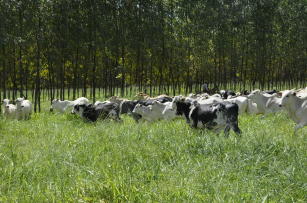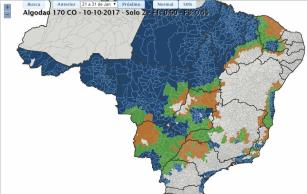Embrapa Integra-C
-
Adapting agri-food and forestry systems to climate change
Embrapa's Integra-C initiative channels the corporation's and partners' efforts on the dynamics of carbon and greenhouse gases (GHG) and their relationship with agri-food and forestry systems in light of climate change.
Through the Paris agreement, 195 countries¹ made commitments to reduce carbon emissions² by 2050. In this context, the development of a national strategy for GHG emission monitoring based on the definition of standardized parameters that are compatible with IPCC methods and specific to local climate conditions will represent a strategic milestone for Brazil.
This strategy relies on robust planning for data acquisition and integration and for the development of scientific knowledge to provide Brazil with suitable recognition for efforts toward sustainability and quality in domestic agricultural production.
All of that effort aims to foster international understanding of the peculiarities of tropical production systems, soil characteristics and our natural environments. It is an agenda with international repercussions and interest, which can be strategic for other tropical countries.
For the success of the initiative, there is a plan with structuring actions in 07 axes, with solutions for different production systems:
- Development of a virtual dashbord (database, functionalities and metrics) on carbon balance in agricultural systems
- Survey and enhancement of research infrastructure for the development of protocols and representations of the carbon balance in the main domestic agricultural systems
- Survey and enhancement of infrastructure to improve alternative techniques for field data collection
- Survey and enhancement of infrastructure for carbon balance metrics and models that are adapted to Brazilian conditions
- Survey and enhancement of infrastructure for risk monitoring, adaptation and sustainability of local production systems
- Development of infrastructure monitoring and maintenance plan in the medium and long term
- Establishment of cooperation and technology transfer networks
Some activities have already started, such as mapping across Embrapa's research network to obtain information on infrastructure, data, experiments, and monitoring areas.
-
Benefits
It is a major challenge for scientists, as it entails integrating data and information, and developing metrics and protocols on carbon balance that are adapted to Brazilian agricultural systems through a corporate management platform, which will allow for:
- Expanding the competitiveness of the agricultural sector on the international stage
- Promoting risk analysis and management in agriculture
- Performing the national inventory of greenhouse gas emissions and removals
- Developing metrics to quantify emissions and removals and national indicators
- Contributing to the achievement of targets stipulated in the Paris Agreement
 Check how the platform works
Check how the platform works
 News
News
-
News report 24/04/2024
Embrapa Integra-C channels efforts to reduce GHG emissions in Brazil
Initiative aggregates data and RD&I findings to contribute to increasing competitiveness and sustainability in production chains. -
News report 23/04/2024
Em quase uma década, anualmente Caatinga retirou da atmosfera 5,2 t de carbono por hectare
Dados mostram que bioma é mais eficiente, nesse quesito, do que 30 outros locais secos ao redor do mundo -
News report 22/04/2024
Instituições públicas e privadas compartilham conhecimentos para subsidiar o 5º Inventário Nacional de GEE
O diretor de Pesquisa e Inovação, Clenio Pillon, representou a Embrapa em evento promovido pela Sociedade Rural Brasileira (SRB) no dia 11, que reuniu, na sua sede em São Paulo,...
 Check the technologies
Check the technologies
*Content only available in Portuguese
Methodology
A RenovaCalc é uma ferramenta adotada pela Agência Nacional do Petróleo (ANP), que calcula a intensidade de carbono para os biocombustíveis que fa...
*Content only available in Portuguese
Product
É uma inovação para digitalização dos solos, baseada no equipamento AGLIBS, que utiliza a inteligência artificial e aprendizagem de máquina para o...
*Content only available in Portuguese
Agricultural System
A integração lavoura‑pecuária-floresta consiste na implantação de diferentes sistemas produtivos de grãos, fibras, carne, leite, agroenergia, entr...
*Content only available in Portuguese
Product
A Plataforma Tecnológica do Programa Nacional de Levantamento e Interpretação de Solos no Brasil (Pronasolos) tem por objetivo centralizar em um ú...
 Download related publications
Download related publications
A erva-mate é uma das espécies florestais mais plantadas no Sul do Brasil, gerando renda para pequenos e médios produtores familiares, bem como para a...
O Estado de Mato Grosso possui cerca de 29 milhões de cabeças de gado e 26 milhões de hectares de pastagens e tem alta representatividade na pecuária...
A estratégia ILPF, na prática, contempla quatro modalidades de sistemas integrados de produção, as quais podem ser facilmente identi'cadas e, cada uma...







